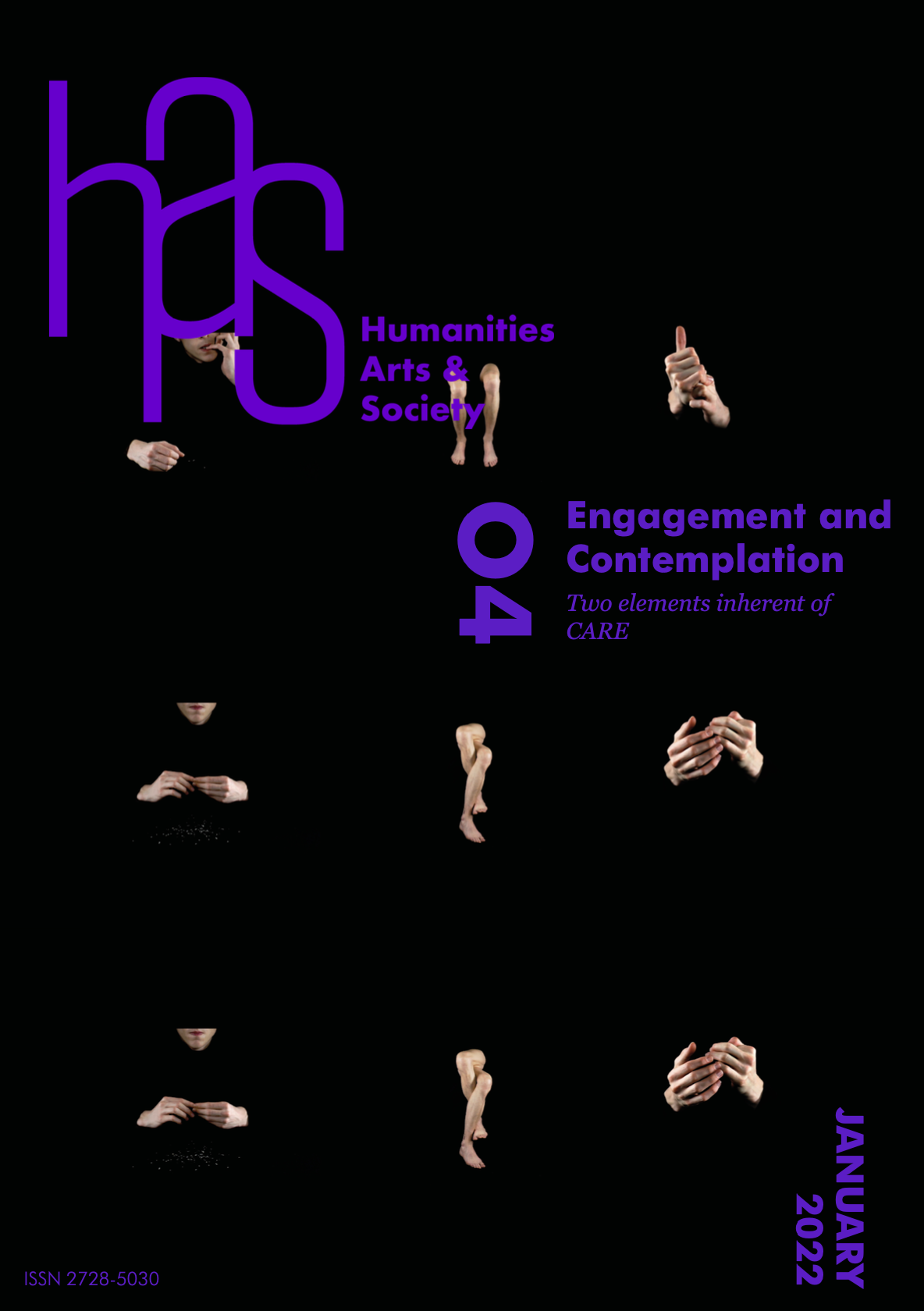MÉMOIRE DE L’AVENIR – HUMANITIES, ARTS AND SOCIETY
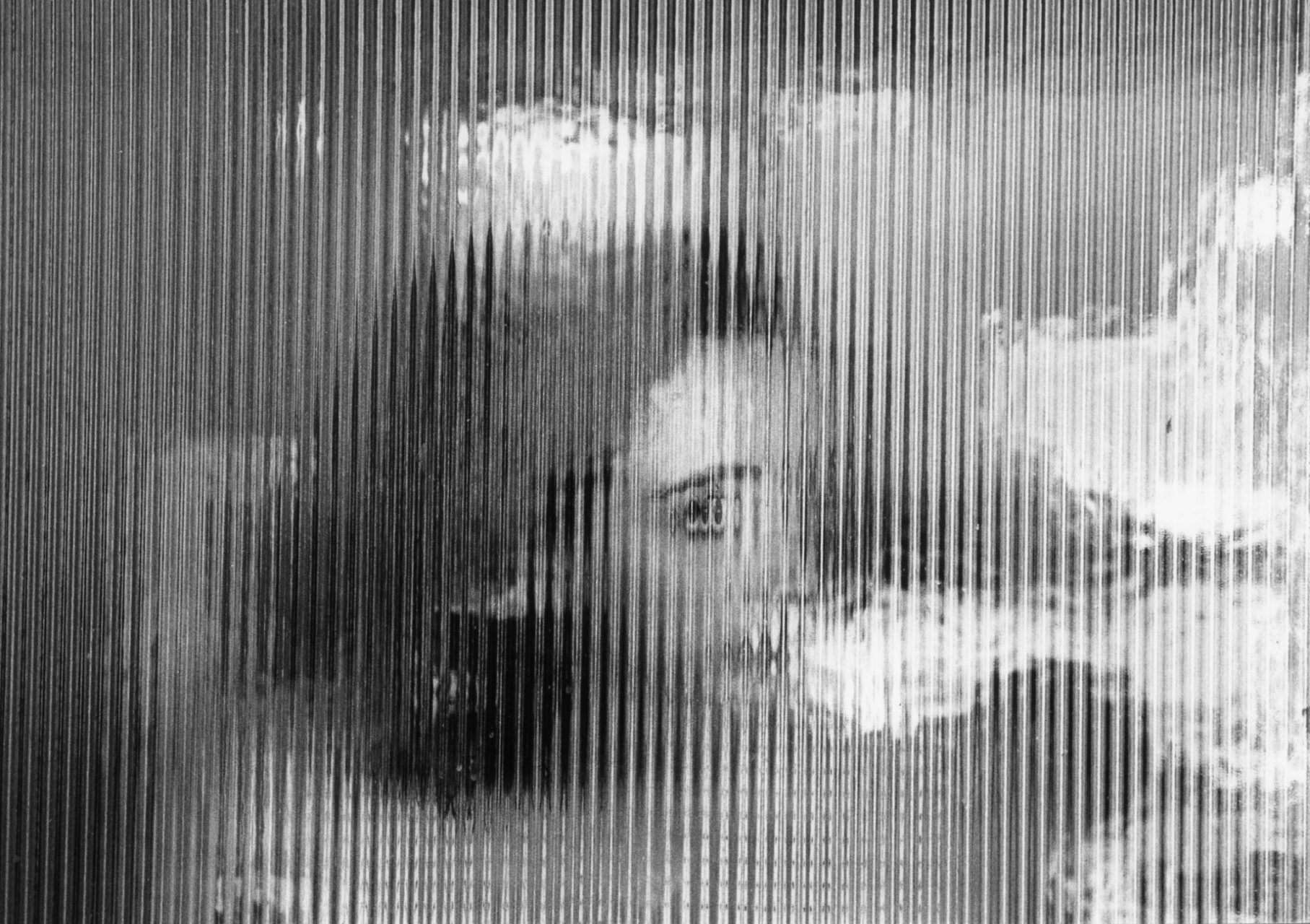
Mémoire de l’Avenir is a non-profit organization whose main undertaking is to use the arts and cultural heritage as a means of improving society, thus, through the development of four interconnected poles: exhibitions, educational actions, mediation and research and The Humanities, Arts and Society project.
Memory of the Future sets creativity at the center of its actions, tools and methods in order to promote reflection, education, active and inventive participation, intercultural and interdisciplinary dialogue.
With the aim of transmitting a message of openness and acceptance of all differences, and to act in favour of mutual understanding between cultures and individuals and the world, we have accomplished from 2003 to 2021: 130 exhibitions, 100 satellite events, 50 000 visitors, 400 workshops in 65 schools and 40 other structures (social centers, prisons, …), 7000 participants, 700 mediations, in 50 cultural places with 8 000 participants and 1500 collaborators artists, researchers, academics.
Recently Faced with the length and multiple phases of the current health crisis, we have developed alternative means of conducting actions at a distance. More than 50% of MDA’s workshops and mediations have been rescheduled or have been effectively adapted to online experiences.
Mémoire de l’Avenir is a space dedicated to contemporary arts, located in popular area of Belleville, at the heart of a multi-cultural neighbourhood in Paris. A platform of expression with Artists and scholars, engaged in social & political creative approach and are actively engaged in the civic society. The MDA-HAS open space is an intercultural and multi-disciplinary space in Paris, where artists monthly exchange & perform on various urgent theme of society, using all forms of arts on all questions related to the Humanities, societies and environment.
Within the recent Sanitary Covid restrictions’ we have reconsidered our agenda of events, and although 30% of our artistic events have been modified, we could successfully realize our events, and maintain physically or virtually 80% of our planning with the artists, while also involving the general public and scholars.
Striving to stay inclusive and accessible to all public, we could cope with this recent crisis by adapting to physical safety and to the technology tools that exist, inventing new ways of pursuing the missions that are dear to us, such as keeping the arts and culture accessible and welcome for all. An extended work with partners allowed us to maintain contact with the public, while developing new paths of creative ways towards a sustainable and caring activities.
THE EXHIBITIONS
ITINERANCES OF BEING VOL. 1 & 2
July and August 2021
collective exhibition

Mémoire de l’Avenir has invited the international art collective DF Art Project for two consecutive expositions, bringing together artists who share a common research, around the fragmentation of identities, of realities, their perspectives, their distortions and/or their dynamics of transformation. The artists are questioning the subject as much as their mediums of use, working with photography, sculpture, performance or video practices.
The first cycle from July 10 to August 28 presented 8 artists of the collective: Claude A. Thibaud / Daniel Cabanzo / Sarah N. / Nicola Bertoglio / Claudia Vialaret / Marie-Jeanne Avgerinos / Fabrice Aliaga / Jean René Berlioz. The Second with Adèle Bessy / Adrien Conrad / Brno Del Zou / Eric Petr / Grégory Dreyfus / Juliette Frescaline / Marie-Christine Palombit / Suzanne Larrieu / Yohan Blanco
All worked on notions of time, of bodies and of their metamorphoses; the works presented are echoes the paths of lives, mentally and physically, throughout whims of desires, of fears, of life and of death. These routes are traced over the course of encounters with the world, evoking intimate, physical and social interrogations, that arises. By portraiture and stylistic approaches of DE structuring the real, the artists try to capture these movements of the spirit and of the being and of the worlds that inhabit them. The origins of the itinerary of the soul are multiple, and represent our hidden selves, although what has bound humans together as all of the same one family, our pluralism and differences have outlined the complexity of Humanity.
Curators : Margalit Berriet, Marie-Cécile Berdaguer – Mémoire de l’Avenir
Ronnie Jiang, Caroline Canault – DF Art Project
Learn more on Itinerances of Being vol1
Learn more on Itinerances of Being vol2
AVI SPERBER
From Nature to Myth
09.10 – 06.11.2021
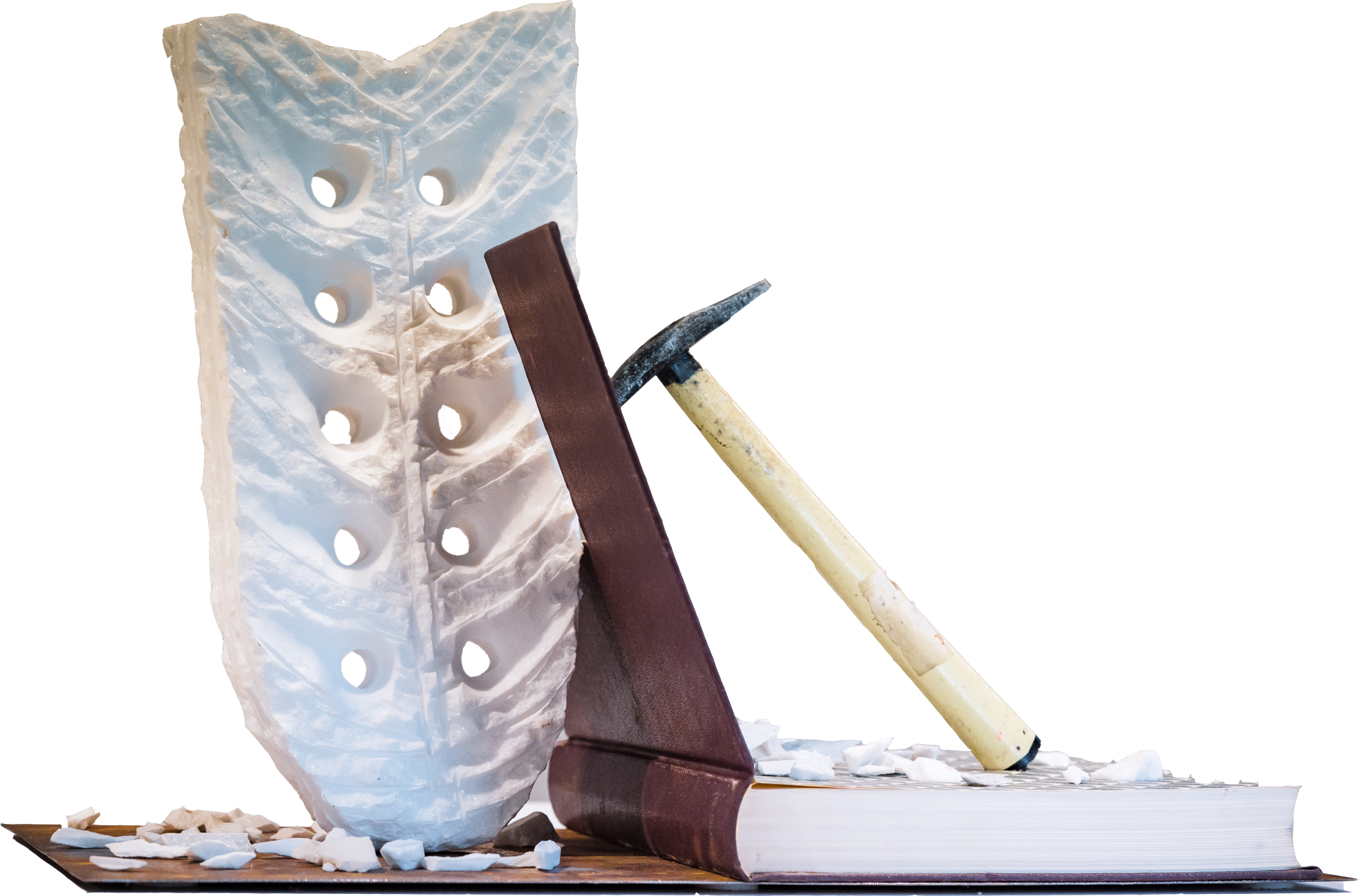
From Nature to Myth presents a series of 12 works, between sculpture and ready-made of curved stones entangled with books, through which Avi Sperber proposes a reflection on what have constituted our cultural principles as well as on the role of nature in their foundation, by analysing the story told in chapter 3 of Genesis. It is through the observation of nature, through the fear and wonders it provokes, through the infinite mysteries it contains, that myths, ancestral stories or religions have emerged in all cultures.
Curators : Margalit Berriet, Marie-Cécile Berdaguer – Mémoire de l’Avenir
PERFORMANCE October 2021
Initium
Creation for electronic device and dancer
By Daniel Cabanzo and Jennifer Gold
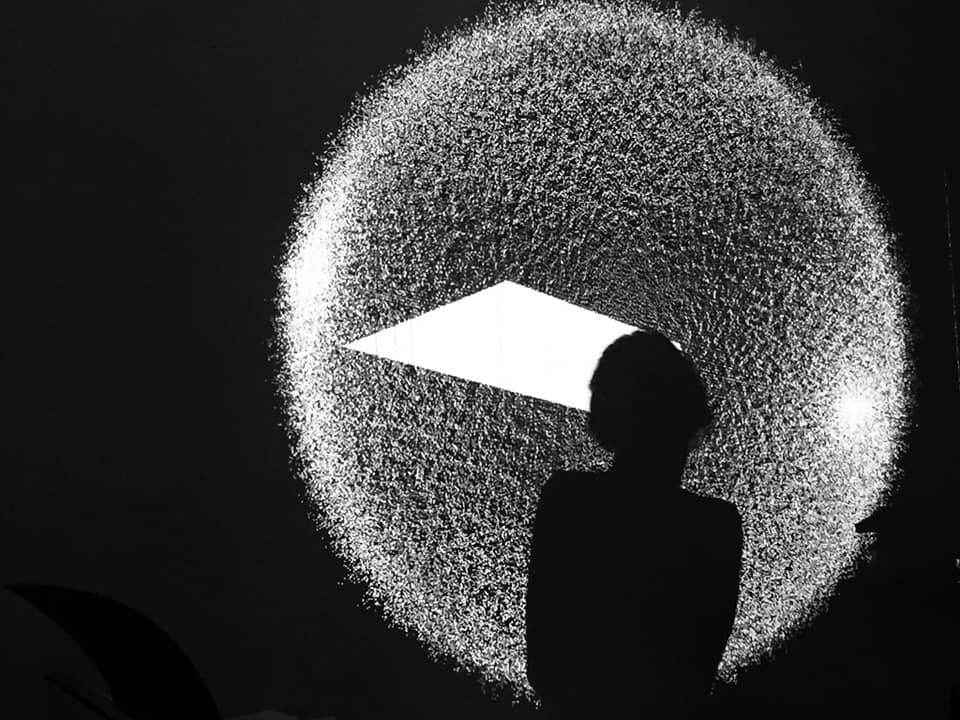
This sound and performance piece are a double beginning: a collaboration between the composer and visual artist Daniel Cabanzo and the performer and visual artist Jennifer Gold, and the starting point for the creation of a series of sound pieces that will compose Daniel Cabanzo’s next album. The artists propose a dialogue in sound and movement around the work of the birth of the universe and of culture
DANIEL CABANZO (Colombia, born in 1979) is a multidisciplinary artist who is interested in different forms of art expression. He participated in the Manifeste academy organised by IRCAM as part of the In Vivo Electro 2015 workshop, and collaborated with Le Fresnoy – Studio National des arts contemporains for the Panorama 2016 edition. He is currently doing his PhD in musicology at the University of Paris-Sorbonne and IRCAM. He has been played by several ensembles in France and in other countries.
JENNIFER GOLD After training as a dancer and actress, Jennifer Gold decided studied philosophy. She evolves within the Parisian underground scene. In 2017, together with two other artists, she created an independent production called «Sans Raison» which specialises in fiction, experimental film and performance. From Kant to Genet, through expressionist dance, butoh and cabaret, Jennifer practices the alliance, even the symbiosis, of concepts supposedly in contradiction.
RICCARDA MONTENERO
Inhabited by Fear
13.11—18.12.2021
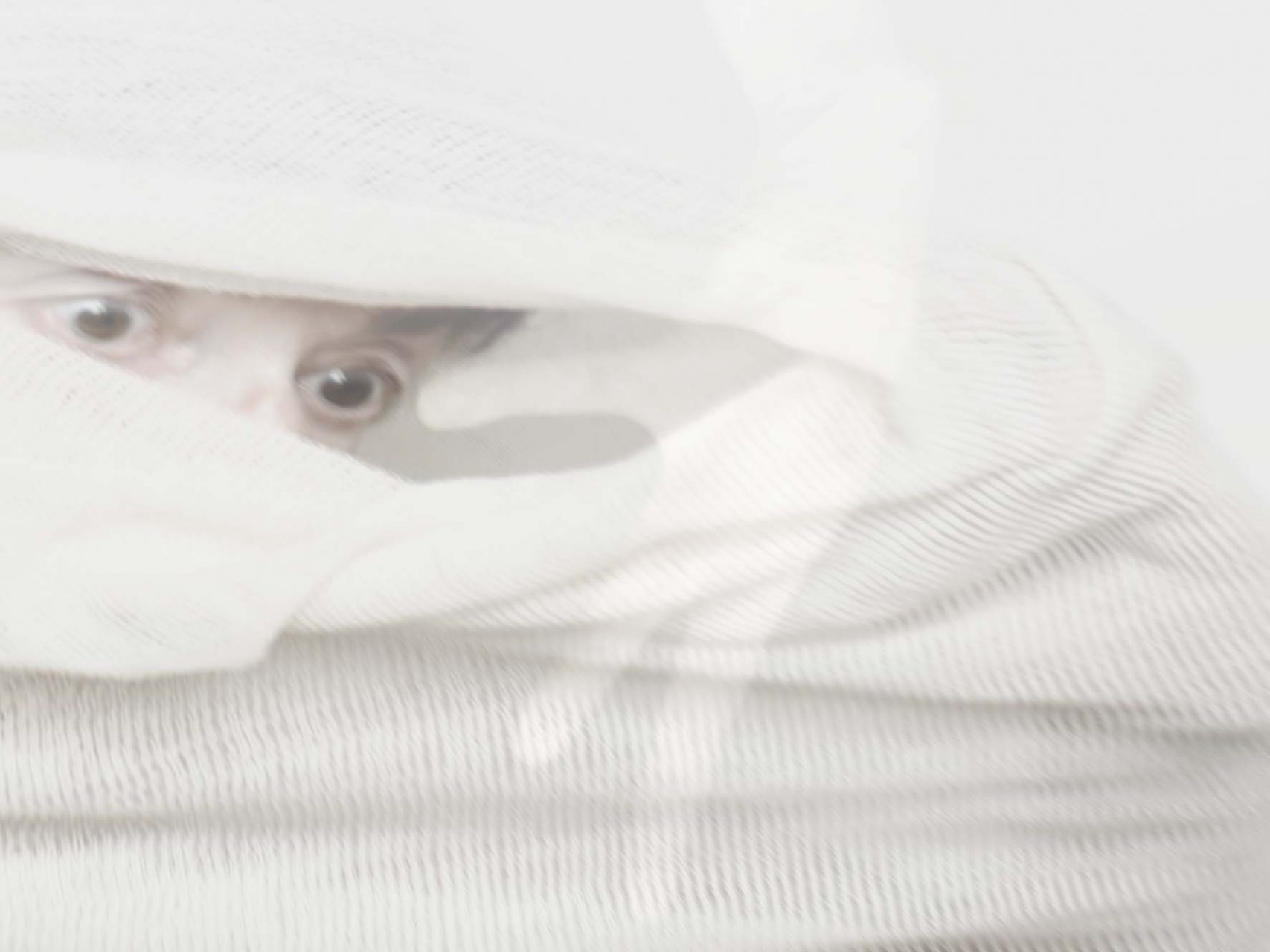
“Fear never leaves us: as children or adults, we are constantly inhabited by it. Fear is a dark, deep and powerful feeling because of its capacity to shape subjectivities and even common feelings.” RM
This state, a result of many causes, affects both cognitive processes and social representations. Whether it is the result of a threat to one’s physical or psychological integrity, the consequence of a collective frenzy, or manipulation, linked to a particular subject, the hold of fear can produce segregative behaviours, violence, and conformist postures that are submissive to authority, says Denise Jodelet, a specialist in social representations. She continues: “This should not prevent us from looking into its potential for resistance and innovation of citizens (…). This requires strength of ideas, representations and imaginaries that give form and substance to alternative visions.” 1 It is at the heart of Riccarda Montenero‘s work: to create places of resistance through the strength of visual proposals.
Curators : Margalit Berriet, Marie-Cécile Berdaguer – Mémoire de l’Avenir
DRESSED BY FEAR
A film written and directed by Teresa Scotto di Vettimo, interpreted by Laurent Borel actor and with the participation of the artist Riccarda Montenero. The film is presented in dialogue with the photographs of Riccarda Montenero during the exhibition. Filming and lighting assistant: Maxime Bruyère, Sound design: Jean Pham, Photography of the set: Brigitte Cano

PERFORMANCE / ALPHA BÊTA SARAH
Reading-performance on extracts from the novel “Alpha Bêta Sarah” by Constance Chlore (published by Le Nouvel Attila, 2020)
Text and voice: Constance Chlore
Song: Rosie not Rosie
Dance: David Pisani
Sound design: Romain Pangaud
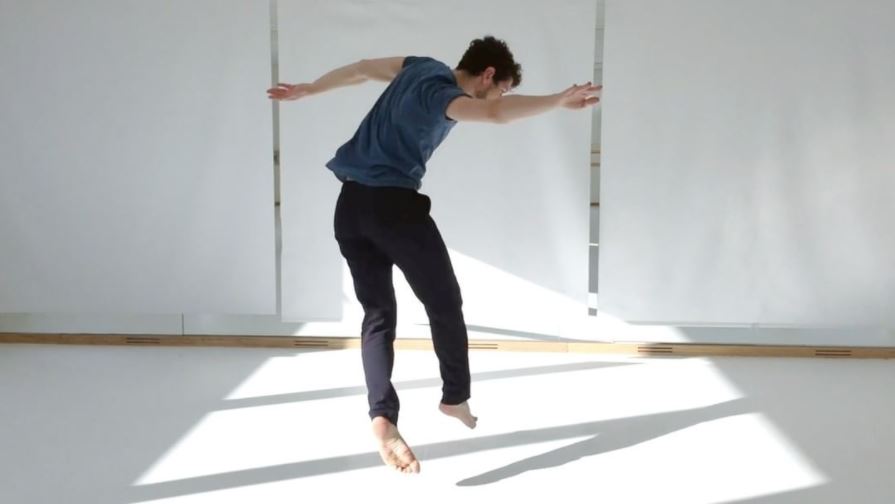
Alpha Bêta Sarah is based on the novel by Constance Chlore / A reading-performance on extracts from the novel “Alpha Bêta Sarah” by Constance Chlore (published by Le Nouvel Attila, 2020)which, against a backdrop of intra-family violence, unfolds around Ernest’s luminous dream of learning to fly like a bird. “Alpha Bêta Sarah” is her third novel. She has also published “Nicolas jambes tordues”, published by La Fosse aux ours and “A Tâtons sans bâton”, published by Punctum. She regularly publishes her poems in magazines. Text and voice: Constance Chlore, Song: Rosie not Rosie, Dance: David Pisani, Sound design: Romain Pangaud, Video: Constance Chlore, David Pisani Constance Chlore, David Pisani and Romain Pangaud
NUIT BLANCHE
2 October 2021
Performance, installation and exhibition

On the occasion of the Nuit Blanche 2021, we are pleased to invite you to this evening with a performance by the artist Cecile Bouillot, an interactive installation by Lamozé and visit of our current exhibition until midnight.
PERFORMANCE
by Cécile Bouillot
Street poems and everyday gestures
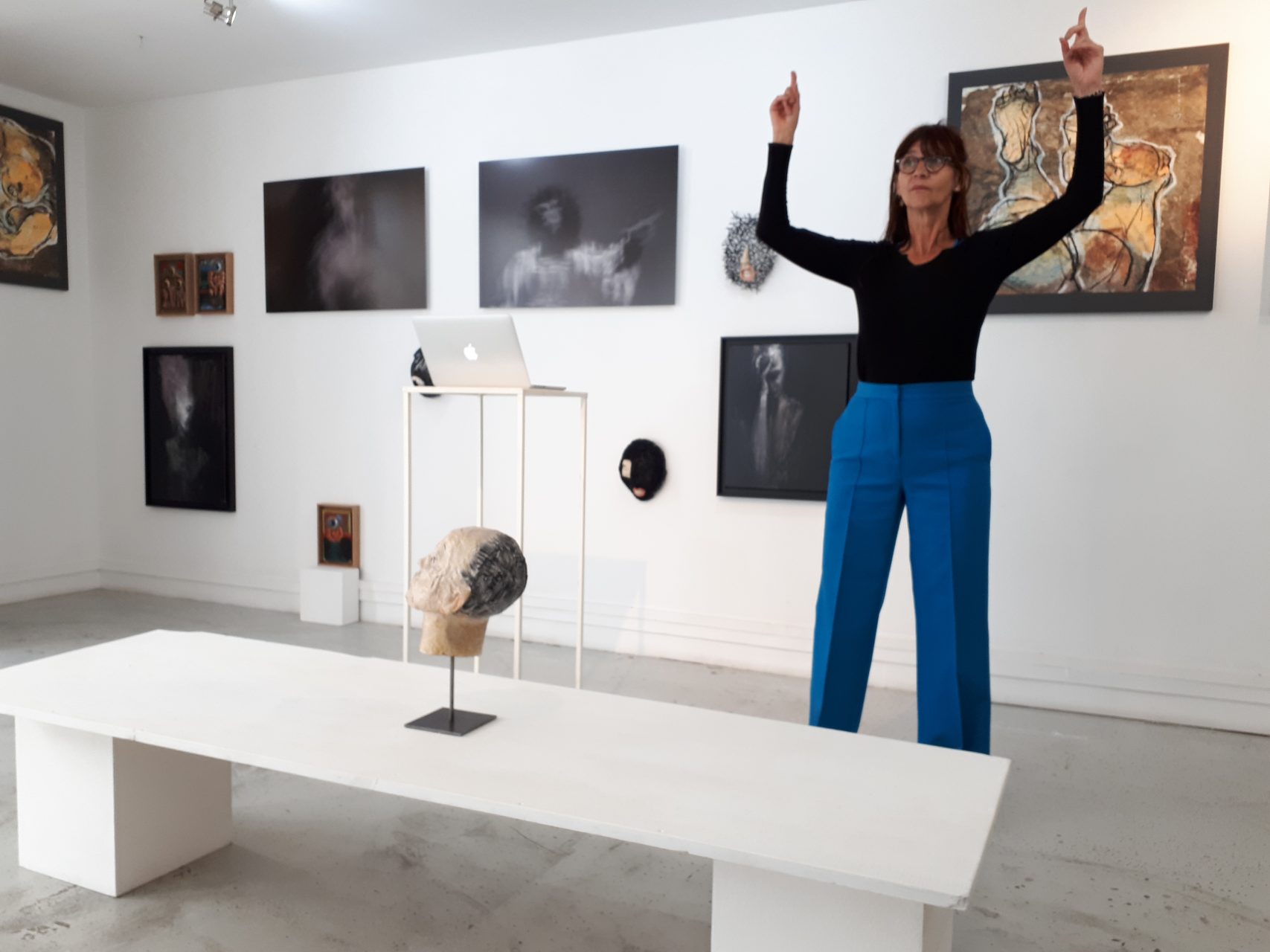
Texts: Cécile Bouillot / Music: Brigande Two performances based on her latest project in which she stages sentences captured in the street since 2020, punctuated by interludes based on everyday gestures set to music by Brigande. Through the prism of a kaleidoscopic narrative, Cécile Bouillot proposes with humour and poetry to confront us with the chirping of the world.
INSTALLATION
Lamozé
The (un)veiled Gaze

Interactive, tactile and sound installation / Selected as part of the projects associated with the Nuit Blanche The (un)veiled Gaze is a work that proposes to question the neurological phenomenon of synaesthesia. It invites us, through gesture and touch, to discover a sonic landscape of which the image of a human body constitutes both the vehicle and the geography.
WORLD LOGIC DAY
14 January/ 2022
At the invitation of UNESCO and C.I.P.S.H, Mémoire de l’Avenir shared the reflections and artworks related to this exhibition project during the World Logic Day on January 14, which took place online.
Find Mémoire de l’Avenir’s contribution here.
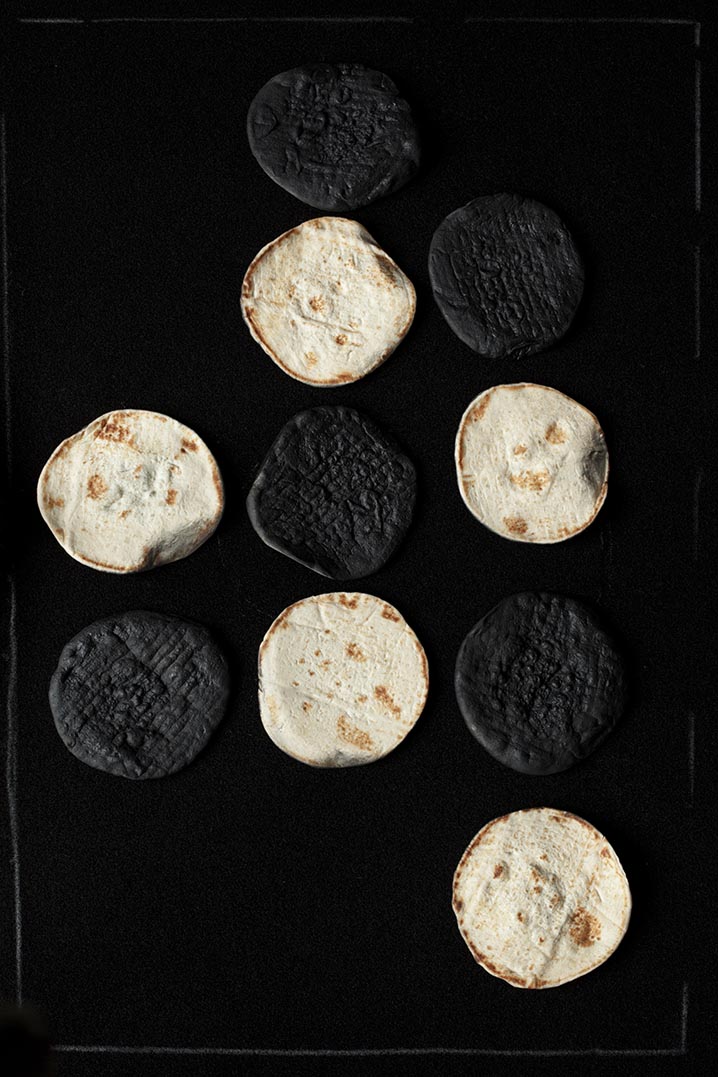
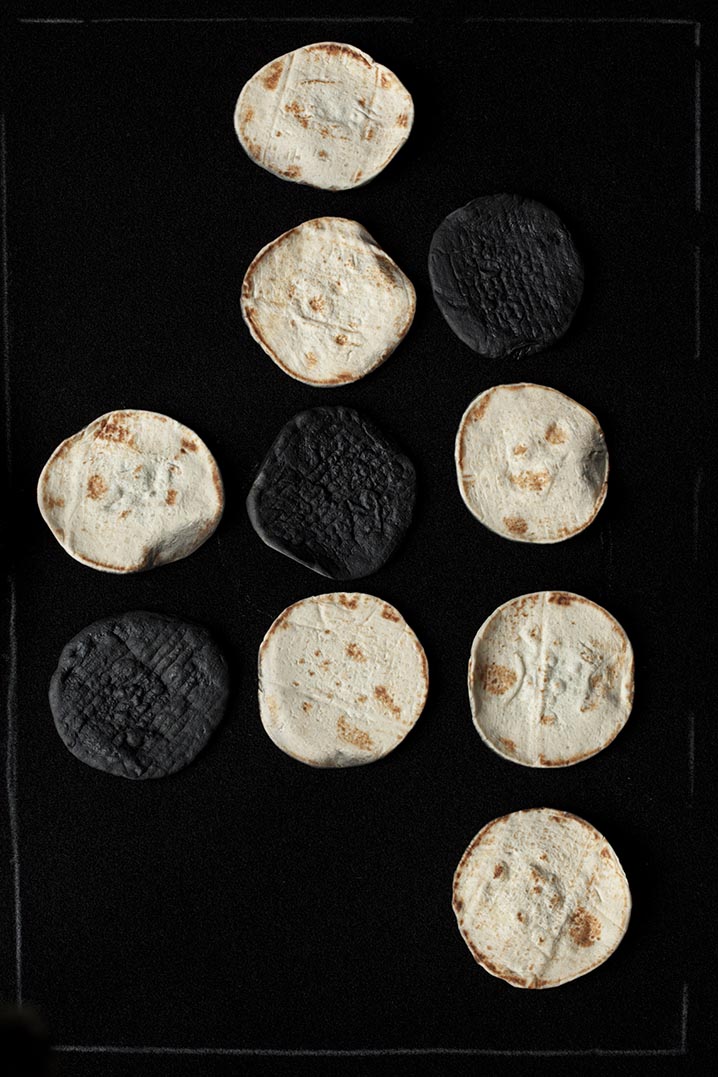

© Joseph Dadoune – photographies from his series Pittas – 2014
The ability to think is one of the most defining features of humankind. In different cultures, the definition of humanity is associated with concepts such as consciousness, knowledge and reason. According to the classic western tradition, human beings are defined as “rational” or “logical animals“. Logic, as the investigation on the principles of reasoning, has been studied by many civilizations throughout history and, since its earliest formulations, logic has played an important role in the development of philosophy and the sciences.
MESSAGE FROM THE DIRECTOR-GENERAL: “At the dawn of this new decade – indeed, now more than ever – the discipline of logic is utterly vital to our societies and economies. Computer science and digital technology, which provide the structure for today’s ways of life, are rooted in logical and algorithmic reasoning. Artificial intelligence (AI), the unprecedented progress of which constitutes a technological and even anthropological revolution, is itself founded on logical reasoning. Through the drafting of the first global standard-setting instrument concerning the ethics of AI, UNESCO has undertaken to establish an ethical framework for this innovative product of logic.”
— Audrey Azoulay, Director General of UNESCO
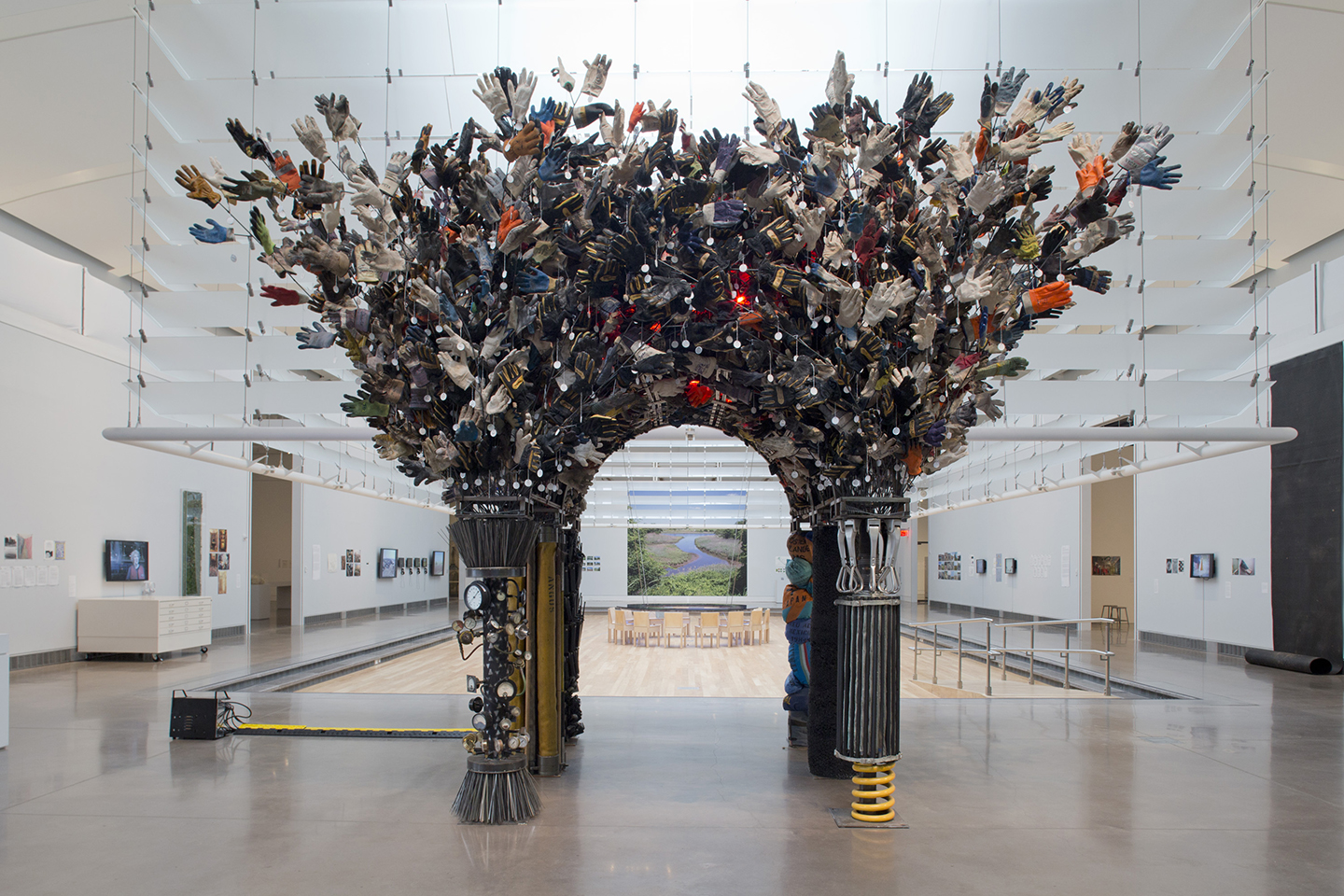
This journey of dialogue consists of a circlet around emblematic monuments, such as the Jardin des plants and the Museum of Natural History, the Great Mosque of Paris, the Arènes de Lutèce, the Panthéon, the Sorbonne, Notre-Dame, the Institute du Monde Arabe, until the return to the starting point. The students, in pairs, had prepared a short presentation of each monument. The mediation consisted in completing this presentation with historical and artistic contents. The tour was a great opportunity for these young people to discover the city, (Paris), appropriate the monuments as also their – some of them had never been there before – be able to comprehend the messages and formal symbolic presentation behind each monument, and to make it accessible to them in a friendly way.
Collège Pierre Sémard,
Journey around the Seine,
Bobigny, 4th grade – students + teachers
This tour was designed to accompany young people from disadvantaged neighbourhoods to places that may seem inaccessible to them.
It starts at the Jardin des Plantes, continues with the open-air sculpture museum, the Institut du Monde Arabe, the Ile Saint Louis and the Ile de la Cité, a certain number of bridges, the Louvre – and the Tuileries garden, the Place de la Concorde, up to the Pont Alexandre III, and finally to Bir Hakeim.
The tour therefore allows you to see, recognize or discover a large number of museums, monuments and works of art that make up the history of Paris. The essential approach of this tour lies in a sensitive observation of the city: observe, describe, tell what we know, taking the time to look at and analyse the city.
The mediation frames the visit by telling the history of the places, adding knowledge, anecdotes and symbolic with artistic contents.
Journey in Belleville
“in the footsteps of Willy Ronis”
WONDERFUL CLICHE
Maison du Bas de Belleville
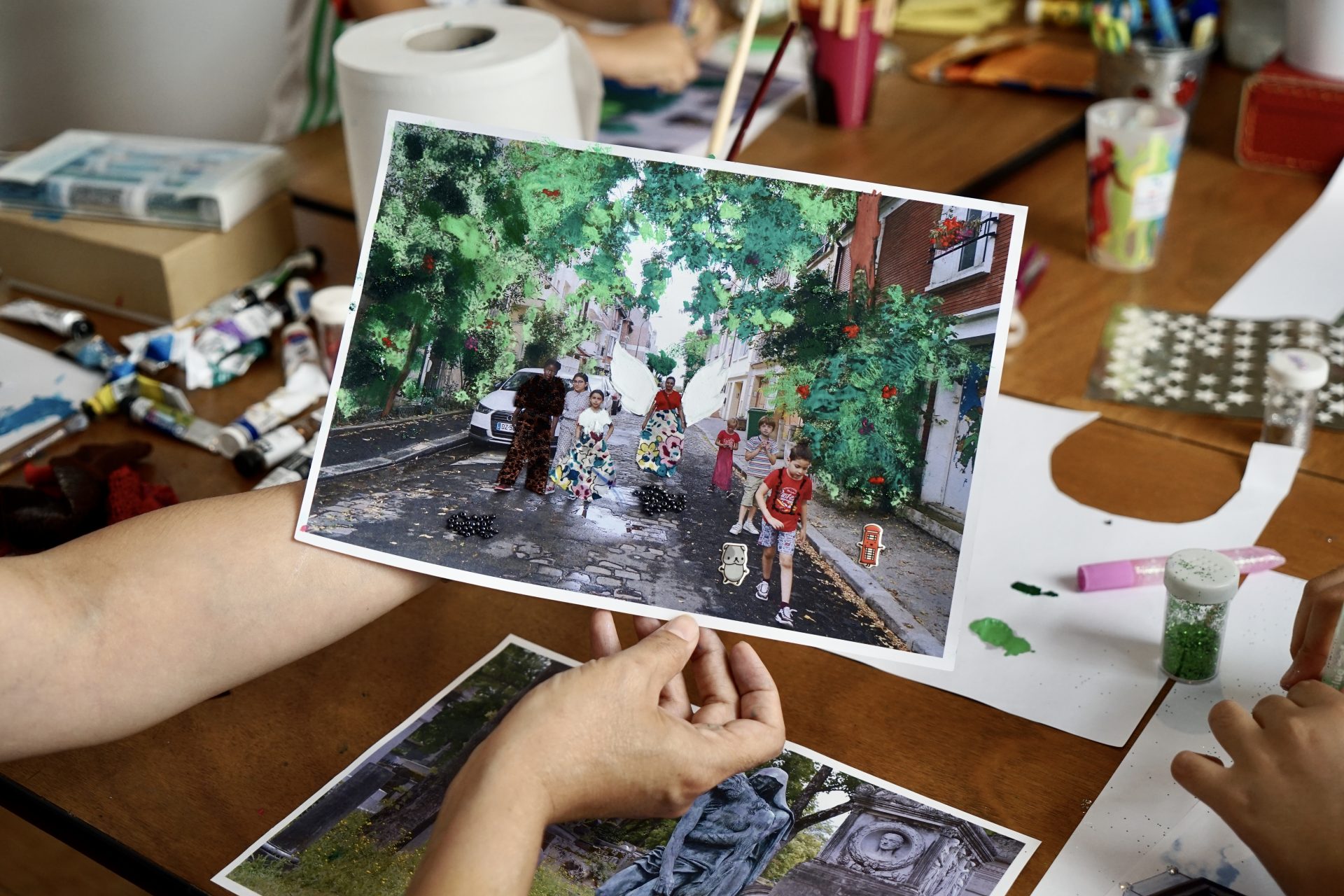
By going to the places that the famous photographer walked and immortalized for decades, with the help of a map and reproductions of photographs as mediation supports, we rediscover the Belleville neighbourhood, punctuating this walk with anecdotes related to the life and work of Willy Ronis.
A “humanist” photographer, Willy Ronis approached photography in a different way: a lively and free photography, which combines humanist values with an aesthetic that is both realistic and poetic, which takes into account the difficulties of the life of precarious people, social injustices, in the world of work or workers’ struggles, which focuses on ordinary situations and the banality of everyday life: “slices of ordinary life”. We also look for clues related to the long history of Belleville – notably the traces of the Commune, the working class past, or the migratory past.
This allows us to see how much the neighbourhood has changed over time, and to appropriate it in a sensitive and creative way. A small booklet accompanying the visit was distributed to the participants, so that they could redo the walk later on independently, if they wished.
WHAT IS FORGOTTEN AND WHAT REMAINS
A Journey of Dialogue: Conception and Realization by MDA
At Museum of the History of Immigration
France Terre d’Asile 19e // Familly and isolated youth /Maison du Bas Belleville
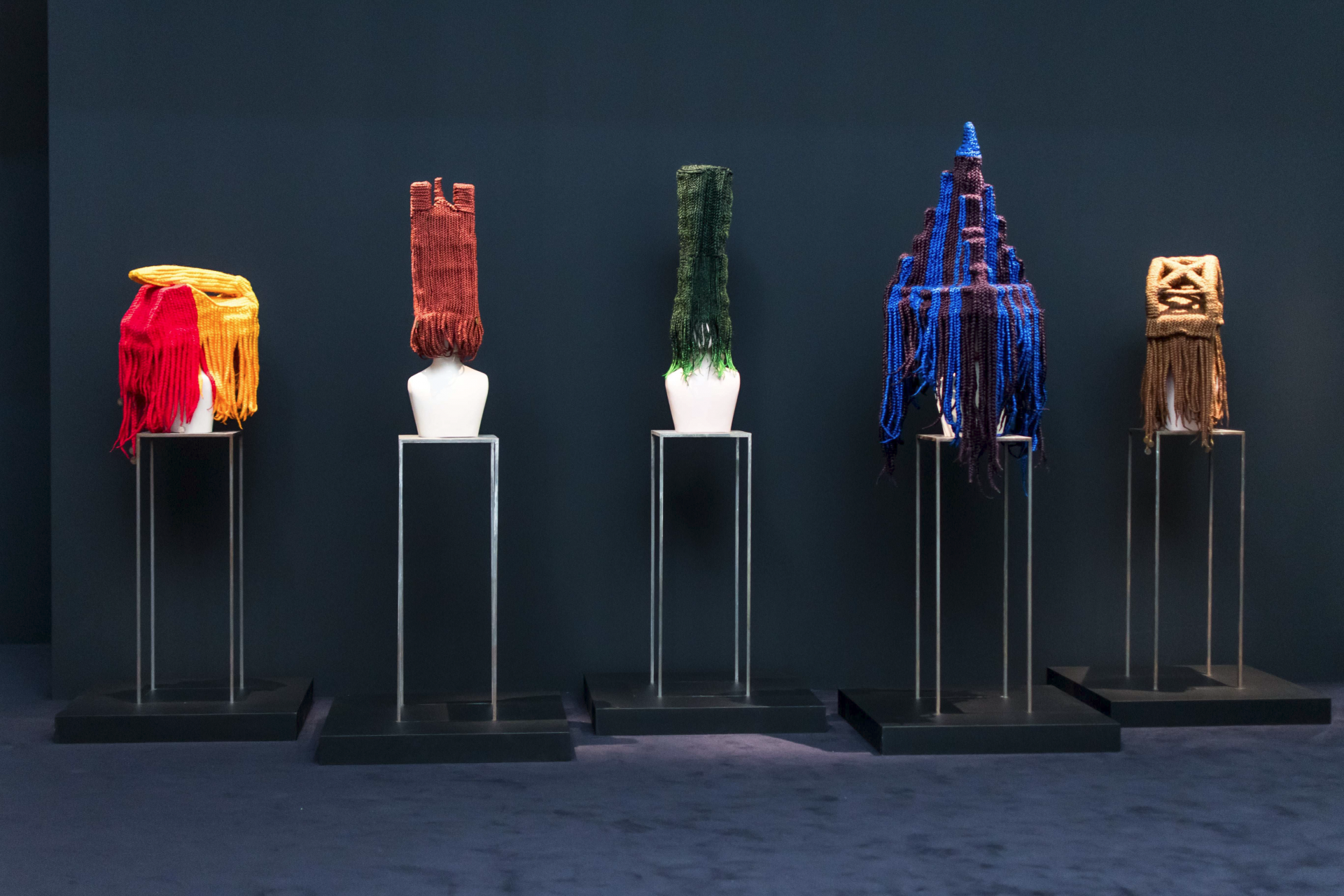
In an age of globalisation and hyper-communication, what does the act of “transmission” still mean? What do we pass on to the next generations? During the visit of this exhibition, we discovered the works of 18 artists from the African continent and its diasporas who questioned memories, identities, traditions, as well as their evolutions, ruptures and different channels of diffusion.
HYBRID DANCES
Père Lachaise Journey of Dialogue
Maison du Bas de Belleville
Families

Opened on 21 May 1804, the Père Lachaise cemetery is the largest cemetery in Paris, and without doubt one of the most famous in the world. In addition to visiting the graves of the many personalities buried in Père Lachaise (Héloïse and Abélard, Molière and La Fontaine, Chopin, Colette, etc.) and discovering a rich heritage of funerary art (Haussmannian, neo-Gothic, neo-classical vaults, etc.), Père Lachaise is also one of the largest green spaces in Paris and a real reservoir of biodiversity. As we walked along the winding, tree-lined paths of the cemetery, we gradually discovered its layout as well as the different episodes that make up its history and that of Parisians (the former confessional squares, the Fédérés wall, etc.). Carried out the day after the Feast of the Dead, this visit was also an opportunity to question the traditions and practices surrounding death, as well as the evolution over the centuries of our beliefs and our relationship with death and the dead.
POLAROID – Maison du Bas de Belleville – Jeunes 14-17 ans
Musée du Quai Branly, Parcours « Masques et Monstres », 05.11.21

This visit, at the request of the Maison du Bas de Belleville, was in connection with the organization of the Carnaval des Monstres in Belleville which took place on November 06. During this visit, we made a tour of the world of traditional beliefs, based on the observation and analysis of different works, in order to understand how human beings and different cultures apprehend the invisible, and cope with death, how they communicate with the beings that inhabit these worlds: from the spirits, ancestors, to the divinities. Accordingly, the participants are introduced to masks, to the costumes and statuettes or to objects of rituals, which allow them to approach these different representations of life, while being sensitized with the anthropological approach of being. Beyond the differences in formal expressions, we perceive how human beings are also similar in essence, sharing the meetings with the nature of life, all are driven by the same fears and hopes.
Philo-art workshop
School Sainte-Geneviève (Meaux), CM2 class
Around surrealism,

This philosophy and art workshop alternate cultural mediation – in order to discover some essential works of surrealism – and artistic practice – it is a question of appropriating and applying the creative principles of surrealism, around the written word and the image, in particular thanks to the technique of collage or the exquisite corpse. This part also aims to appeal to creativity, the unconscious and the imagination. In a transversal way, in the discovery as well as in the practice of art, we never stop questioning the themes that emerge. It is not a matter of tracing a history of philosophy or a history of art, but rather of practising a permanent questioning based on the works – whether they come from established artists or from the students. The works of art then become the basis for dialogue and reflection, encouraging creative thinking and autonomous reflection.
ARTS AND DIALOGUE – WORKSHOPS
THE STATE OF THE ART
a workshop by Rony Efrat
2 groups of adults learning french @Maison du Bas Belleville
Under the partnership of the DDCT – SPV, City of Paris, Ministry-charged of the City

The workshop addressed the emotional dimension contained in words and speech. The artist started with objects that accompanied the participants emotionally in their everyday life to work with them on the lexical field of emotions and sensations. These objects, sometimes very ordinary, were then staged by the participants in a garden to be photographed. A booklet of silver photos with texts was published. The workshop was completed by the mediation “Parcours autour de la Seine”.
IMAGINE
@ la Maison du Bas Belleville
women in a professional integration project hospital service agent
Under the patronage of DDCT – SPV, City of Paris, Ministry in charge of the City
a workshop by Myriam Tirler and Alexandra Roudière
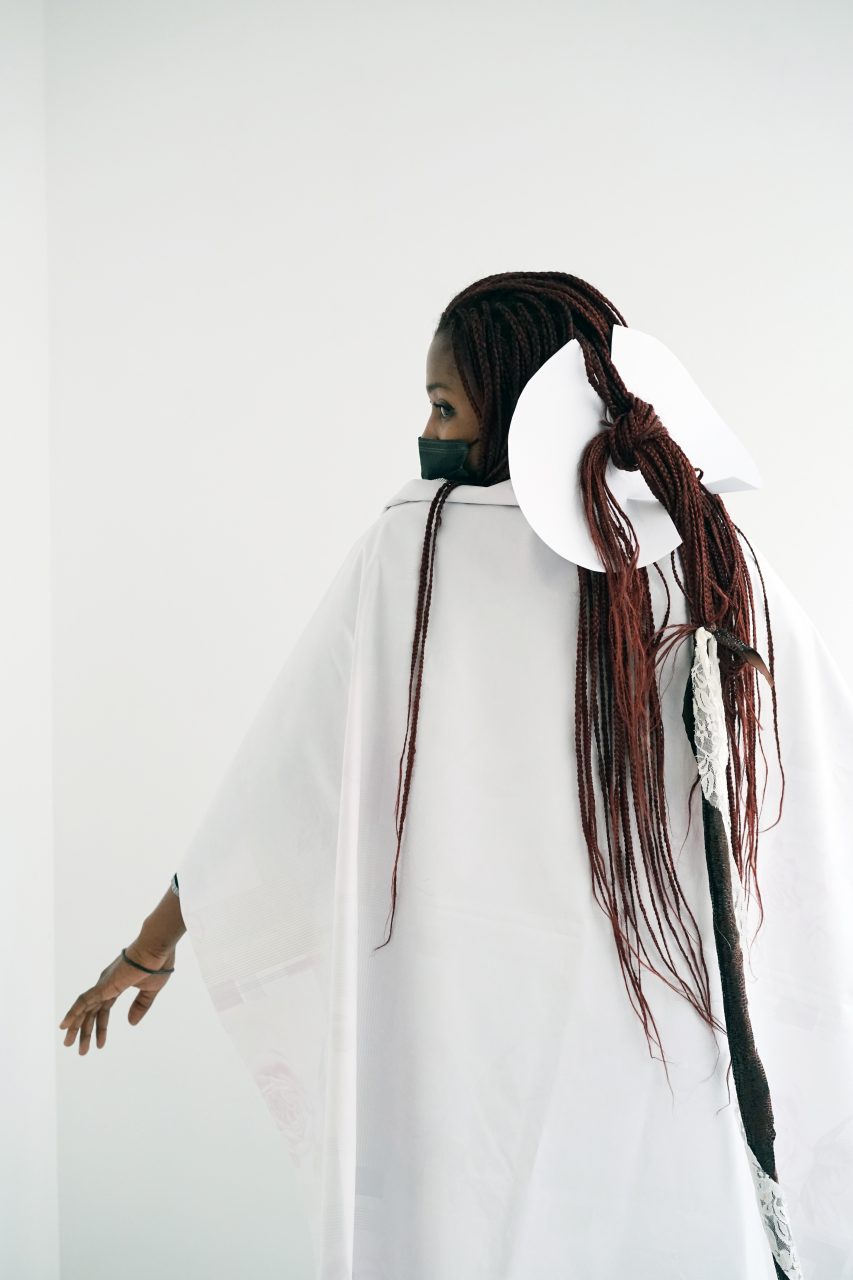
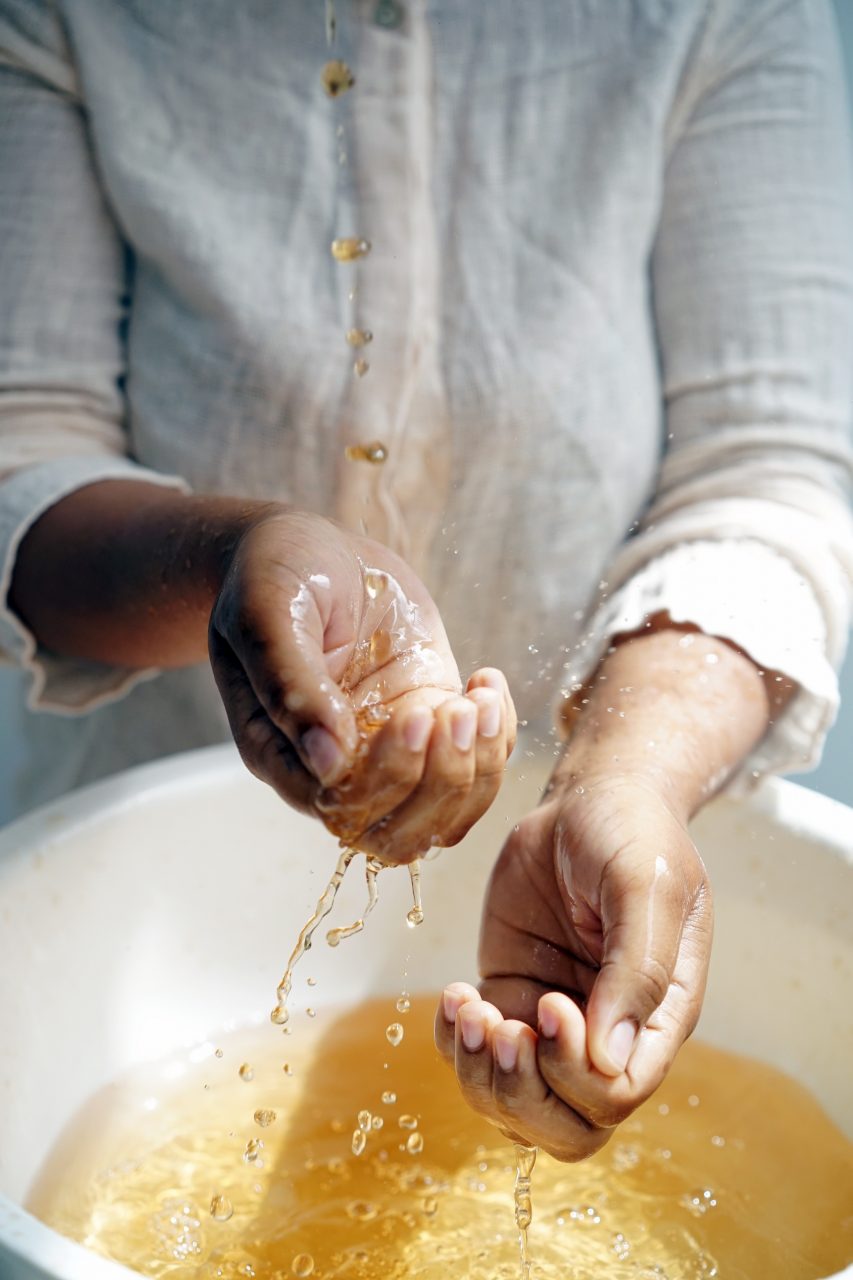
The main aim of the workshop was to promote touch and the sensations generated by physical contact with another body. The professional participants gathered around this workshop, all working in the hospital field, were accompanied to work and reinterpret the notions of care and touch that are at the heart of their profession. They were led, collectively, to experiment with the results of their reflections through gestures, with the aim of being able to use this knowledge in their work. The workshop was completed by a journey around care in a public garden.
HYBRID DANCE
Workshop by Alexia Martin
@ Maison du Bas Belleville / groups of mothers of families from the Belleville district, DAC, City of Paris, Ministry in charge of the City
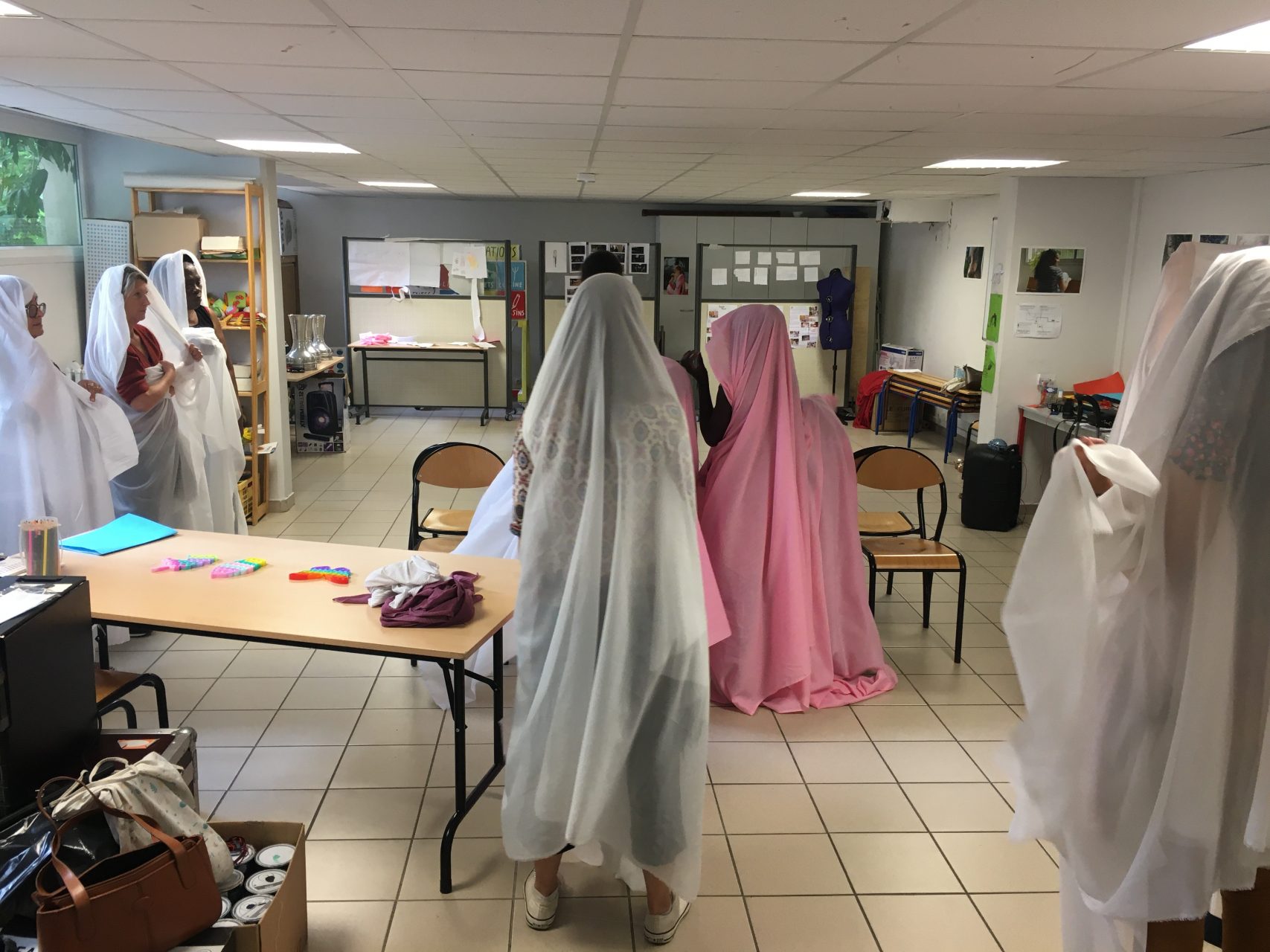
This dance workshop allowed the participants to discover the variety of traditional music while working on gesture and body feeling, two important issues for this public. The workshop was conducted in such a way as to enhance the self-confidence of the participants and proposed an approach based on intuitive and spontaneous movements to the proposed rhythms. The workshop was completed by the mediations/dialogue: – On the steps of Willy Ronis” in Belleville. Around the exhibition “What is forgotten and what remains at the National Museum of the History of Immigration and Journey to Père Lachaise
WONDERFUL CLICHÉ
A workshop by Myriam Tirler
@ Maison du Bas Belleville / families of the neighbourhood
With the DAC, City of Paris, Ministry in charge of the City

Between Belleville, the Buttes Chaumont and Père Lachaise, the workshop proposed to observe the usual places where families of the 20th arrondissement of Paris frequent to understand the links they have with the district. The goal was not only to discover the neighbouring districts and their architectural and vegetal heritage, but also to reenchant these places of life. The artistic intervention with glitter and colours on the photos taken during these walks allowed to reactivate the imagination and to revalue the territory. The workshop was completed by the mediation “In the footsteps of Willy Ronis” in the Belleville district.
ALL MEANS (OF EXPRESSION) ARE GOOD,
Villepinte prison
Dialogue workshop Drawing + Writing + Reading:
With photographer Myriam Tirler and author Sophie Saulnier

The action is essentially based on a booklet, a basic tool, distributed to the participants in the workshop, which includes extracts from literary texts and illustrations of works of art, thus combining the written word with images, as in the case of comics. It is completed by the possibility of carrying out exercises and games (around writing and drawing). The objective of this workshop is to encourage dialogue, while questioning what communication and expression are, in a benevolent and non-judgmental framework. Based on these proposals for artistic and cultural mediation activities, the participants are invited to consider expression and communication as a place for creativity, experimentation, games, creation, and (re)knowledge of personal language and their own value. In short, it is about democratising and de-complexing language, its access and its uses. By inviting the participants to appropriate a singular and collective reflexive path, they have the possibility to transpose their personal life experience, to explore it from a new angle, and to give it a new light. The workshop aims to raise awareness of the fact that all forms of expression and language, without judgement or hierarchisation, are legitimate and nourish the social link.
FREE TIME
Meaux-Chauconin Prison
Film-debate workshop,

After watching a film related to the workshop (the book, reading), we start a dialogue in order to analyse the questions that emerge, which each participant can then appropriate. It is then a matter of encouraging a reflective dialogue, which makes it possible to make the link between the singular experiences of each person and the questions of society. For example, after watching Fahrenheit 451 (directed by Ramin Bahrani, 2018), we discussed various themes such as the risks inherent in the single thought, the acculturation, the addiction to digital technologies and the danger for democracy, the dehumanisation of society and the desensitisation of emotions, but also the symbolism of the book as a bulwark of knowledge and meaning. The dialogue workshop is also a space for active listening and the collection of participants’ words, in order to recognise the value of these words in the difficult context of detention, and by extension the recognition of the integrity of each individual.
BIG DATA & SINGULARITIES
The advanced art courses
of the Anna-Schmidt-Schule Frankfurt,
age 17-18
With teacher Dorle Schmidt, Frankfurt

Designed posters dealing with the topic of big data in positive, negative or ambivalent ways.
TRAINING
(BIO)DIVERSITY AND INTERCULTURAL DIALOGUE
2 DAYS // 10 participants
By Aurore Nerrinck and Gerardo Bricout

To survive, and to become alive again, we need to reconcile ourselves with our sensitive part, to feel – to feel, to connect or reconnect to the links which attach us to this planet and of which we are also made off. For this, art, culture and creativity could represent resources, inseparable from the natural sciences. What place can they take in this particular moment? Also, the first objective of this training is to explore the relations of the human being to the living, by putting the accent on the interdependence of the forms of life, of the human and non-human otherness, and especially, the possibilities of durable cohabitations.
THEMES: Identity and bio-diversity, Agri-cultures, eco-citizenship, arts and cultures of the Anthropocene, human/environmental relations, environmental issues, relational ecology, intercultural/inter-species dialogue, biomimicry, creativity
PUBLICS: professionals or volunteers in the associative, social, educational, integration, health, etc. field whose structure is located in the political territories of the 20th district.
PLACE OF TRAINING: Villa Belleville – Artists’ residence of Paris Belleville / Laboratoires d’Aubervilliers
Training supported by the Ministry in charge of the City (City Policy)
DIGITAL CULTURES AND IDENTITIES
@ Association Autre-monde / participants / volunteers
By Aurore Nerrinck and Gerardo Bricout
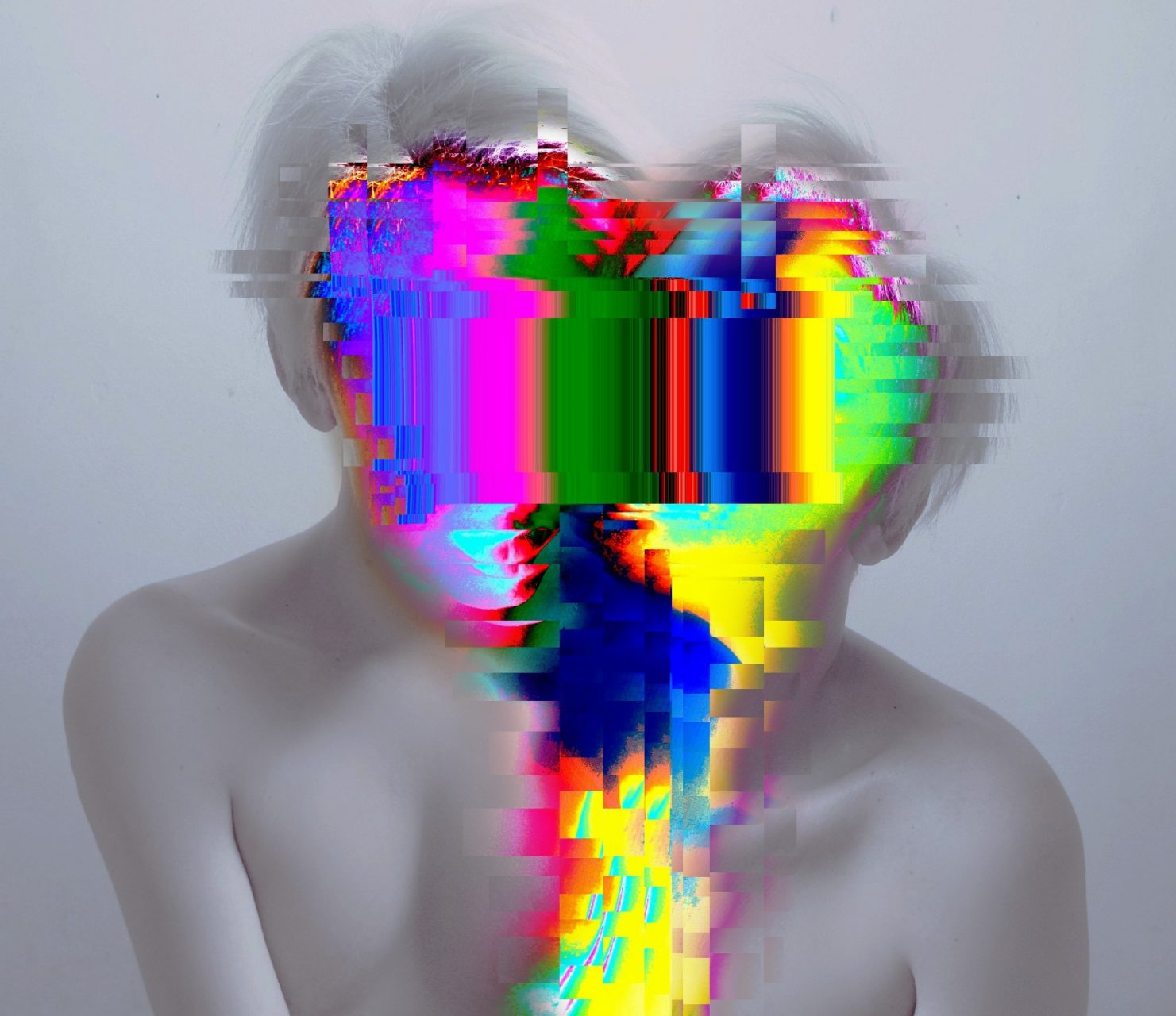
This training course on socio-cultural animation in an intercultural environment aims to question the posture and practices of volunteers who are called upon to build or lead workshops or cultural outings in the framework of an association. Based on an active and participative pedagogy, it will alternate workshops of practice and experimentation and workshops of dialogue to bring out all the questions, difficulties and problems inherent to this activity. It will also question the posture of the facilitator, the content (never neutral) of the activities, and the skills (relational, among others) necessary to carry out actions with vulnerable people, in accordance with their expectations and needs.
THEMES: culture, identities, cultural rights, intercultural dialogue, notions of creation/creativity, choices/techniques/materials, economy of means, games, relational skills, artistic and cultural references, collaboration/co-construction/relational ecology/conflict/projection, balance, equity, power issues, etc.
PLACE OF TRAINING: Autremonde / Centre Georges Pompidou
Mémoire de l’Avenir
http://www.memoire-a-venir.org/index_en.html
Mémoire de l’Avenir
http://www.memoire-a-venir.org/index_en.html
